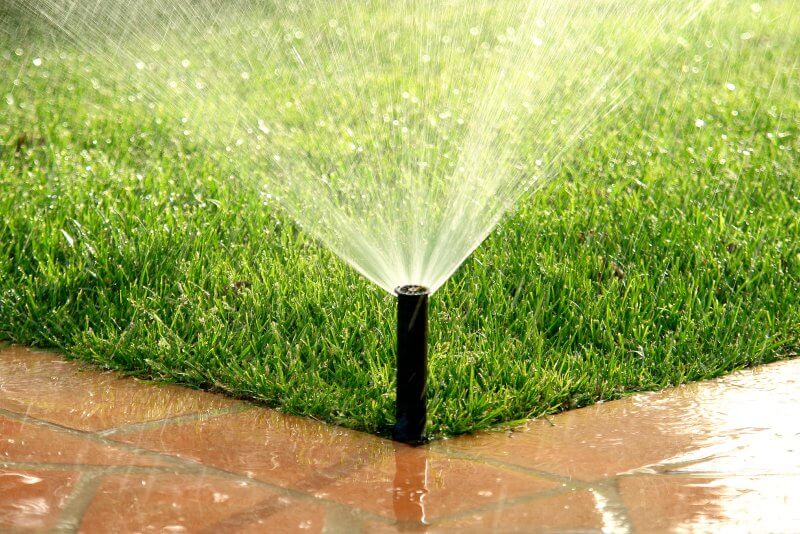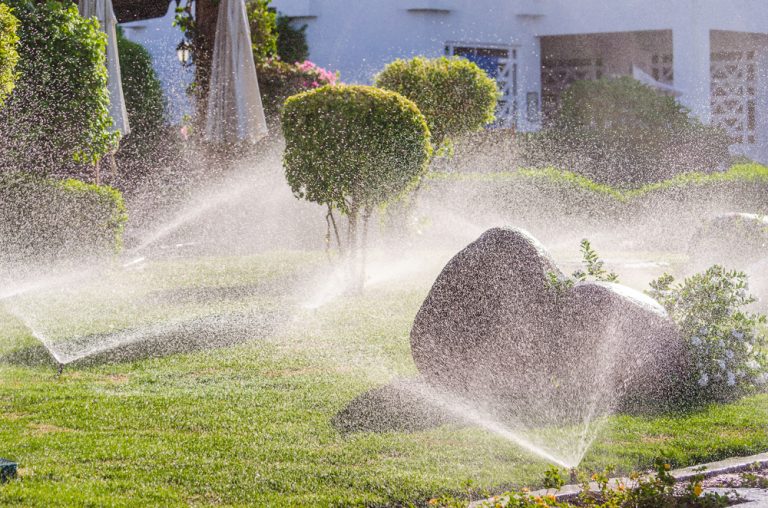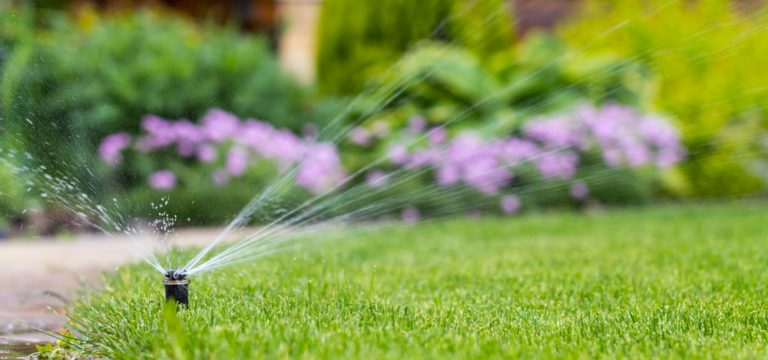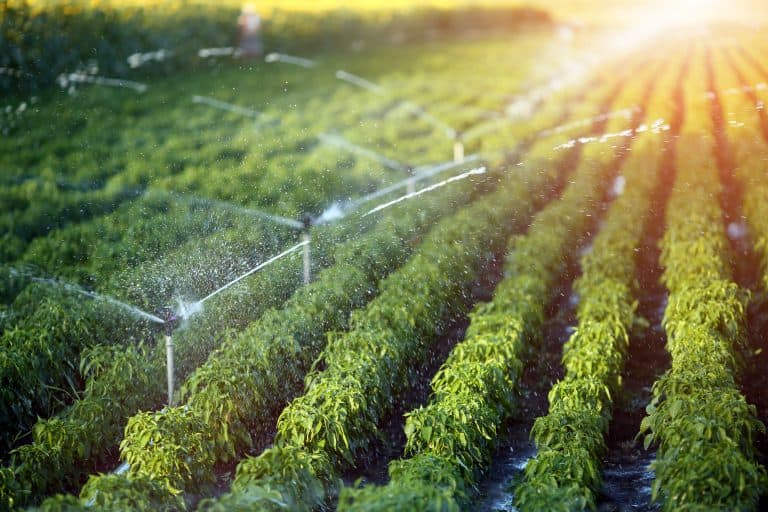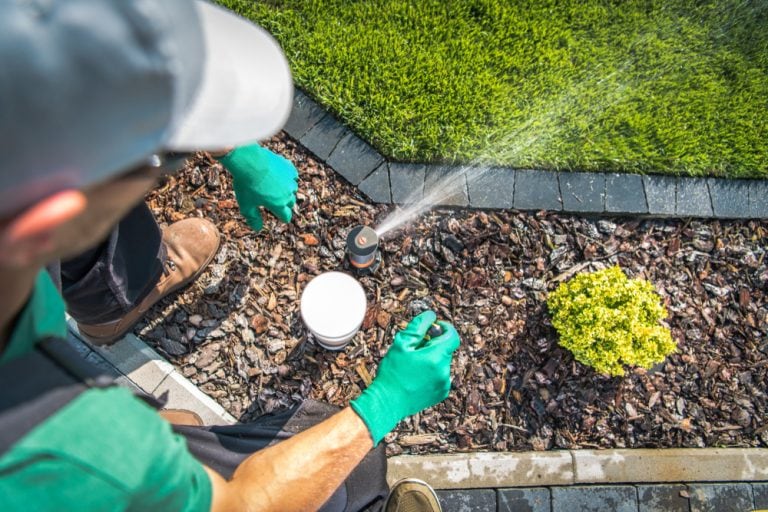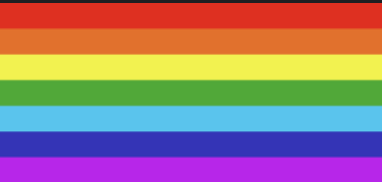Conserving water is an important step to take in US homes. Household leaks, alone, waste an average of 900 billion gallons per year across the nation, and this number doesn’t even take into account inefficient lawn sprinklers.
The problem is that in Dallas, it’s impossible to keep your lawns green and happy in the summer months without a lawn sprinkler. We might get the most rainfall on average in May but by August, we get less than two inches.
How do you make sure that your lawn sprinkler is efficient and isn’t wasting both water and money?
Read on to find out everything you need to know about lawn sprinkler efficiency.
Signs That Your Lawn Sprinkler Isn’t Efficient
In order to understand lawn sprinkler efficiency, it’s important to understand the signs of an inefficient lawn sprinkler. An efficient lawn sprinkler should distribute water evenly in your yard for a set amount of time. It should not put out more water than your lawn can absorb, or all of that excess water becomes run-off.
Let’s take a look at the ways that you can recognize an inefficient lawn sprinkler before your water bill is astronomical.
Leaks
A good way to determine that your lawn sprinkler is inefficient is by checking for leaks, especially when the system is turned off. If this occurs, you may have a “Low Drainage Head” or a leaky zone valve.
In some cases, your lawn sprinkler may leak while it’s on, releasing water into areas that don’t need it. This often happens at the hose connection point, which means that water may be pooling near your foundation. Not only is this wasteful but it can actually cause structural damage over time.
Broken Heads
Broken sprinkler heads can affect your water usage in a number of ways, from contributing to leaks to causing backups in your irrigation system. Look for sprinkler heads that don’t turn on at all, don’t run at full capacity, or don’t properly distribute water. These are all signs that you have a broken sprinkler head that will need to be repaired or, more likely, replaced.
Over or Under Watering
It’s important that you take into consideration weather and heat when you decide on a schedule for your lawn sprinkler. This will determine how much water you should actually be using.
The best time to run your sprinkler is between 9 and 10 am. This allows water to seep into your lawn before the hottest temperature of the day sets in. This helps you to lose less water to evaporation and it also helps your lawn to stay cooler later in the day, which means less stress for your grass and plants.
If you’re not optimizing your sprinkler schedule, you may risk over or underwatering your lawn. Too much water in a cooler part of the day or after sunset could lead to pooling and over-saturation. Too little water during the hottest, brightest part of the day could mean that your yard is barely able to soak up any of that water at all.
Brown Spots in Your Lawn
Brown spots in the grass are a homeowner’s worst enemy. If you notice brown spots in your grass, it could indicate a problem with your sprinkler system.
In some cases, brown spots arise because an area is not receiving enough water and the grass is burning from the heat and dryness of the earth. Your lawn sprinkler is probably designed to water your lawn by the square foot, which means that other areas are probably receiving more water than they need while some are receiving too little.
In other cases, brown spots can actually indicate that you are over-watering that area. Grass can turn brown when it becomes diseased or infected with fungus. Disease and fungi are often borne out of consistently damp environments when your lawn doesn’t have enough time to dry out between waterings.
Wet Spots in Your Yard
Your lawn sprinkler should not be creating small pools of water all over your lawn. If it is, that means that it is putting out far more water than your grass can handle.
An efficient lawn sprinkler will provide just enough water for your soil to absorb and distribute to the roots of your grass and other plants. However, soil can only retain so much water at a time, and if you give it too much, it will leave quite a bit of standing water on the surface.
What to do About an Inefficient Lawn Sprinkler
If any of these symptoms sound familiar to you, it’s time to call in a professional sprinkler technician. These issues are costly to leave untreated but in most cases, there is no need to replace the entire sprinkler system. Instead, a professional can assess the source of the inefficiency and repair only what needs to be fixed.
Fixing an inefficient lawn sprinkler may not be the best time to try out new DIY skills. It’s not always easy to pinpoint where the issue originates and many of the pieces are easy to damage if you are unsure of what you are doing. Instead, ask for an inspection and have any issues repaired professionally.
J Bell Services Is Here to Help
If you’re in Dallas and you’re not sure if your lawn sprinkler is working as efficiently as you’d like, it’s time to call in a professional sprinkler technician. At J Bell Services, we offer a seasonal sprinkler maintenance plan that is designed to best suit your needs! We can install a new lawn sprinkler if needed and inspect your system throughout the year to ensure you never waste water or money.
To book your first appointment, contact us today. We’ll respond within 48 hours and find the best time for our team to head your way.

